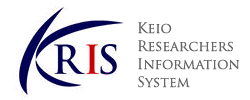-
Affiliation
-
School of Medicine, Department of Internal Medicine (Gastroenterology and Hepatology) ( Shinanomachi )
-
Position
-
Senior Assistant Professor (Non-tenured)/Assistant Professor (Non-tenured)

KEIO RESEARCHERS INFORMATION SYSTEM |
Details of a Researcher
このページはJavascriptを使用しています。すべての機能を使用するためにはJavascript を有効にする必要があります。
Horibe, Masayasu
|
|
|
Chandra S., Halfdanarson T.R., Carlson E.E., Rabe K.G., Mahipal A., Majumder S., Bamlet W.R., Horibe M., Tella S.H., Shariq O., Carr R.M., Cleary S.P., Oberg A.L., Antwi S.O.
Endocrine Related Cancer 32 ( 4 ) 2025.04
ISSN 13510088
Feasibility of endoscopic submucosal dissection including papilla (with video)
Yahagi N., Takatori Y., Sasaki M., Imura Y., Murata S., Sato T., Minezaki D., Hayakawa T., Nakajima Y., Okada H., Sakurai H., Tojo A., Iwata K., Miyazaki K., Kayashima A., Masunaga T., Mizutani M., Akimoto T., Seino T., Kawasaki S., Horibe M., Fukuhara S., Matsuura N., Sujino T., Nakayama A., Takabayashi K., Iwasaki E., Kato M.
Digestive Endoscopy 37 ( 4 ) 402 - 410 2025.04
ISSN 09155635
Hayakawa T., Horibe M., Iwasaki E., Bazerbachi F., Suno Y., Sato T., Okada H., Nakajima Y., Mizukami Y., Kayashima A., Seino T., Kawasaki S., Kanai T.
Den Open 5 ( 1 ) 2025.04
Kayashima A., Horibe M., Iwasaki E., Bazerbachi F., Kawasaki S., Kanai T.
Pancreas 54 ( 3 ) e188 - e193 2025.03
ISSN 08853177
Takimoto Y., Iwasaki E., Horibe M., Fukuhara S., Minami K., Kawasaki S., Masaoka T., Ogata H., Bazerbachi F., Kanai T.
Journal of Hepato Biliary Pancreatic Sciences 32 ( 3 ) 254 - 263 2025.03
ISSN 18686974
Sato T., Iwasaki E., Horibe M., Bazerbachi F.
Clinical Journal of Gastroenterology 18 ( 3 ) 541 - 542 2025.06
ISSN 18657257
Guarding the Gate: The Sentinel Role of Endosonograpy in Precluding Unwarranted ERCP
Bazerbachi F., Iwasaki E., Horibe M.
Clinical Gastroenterology and Hepatology 23 ( 7 ) 1272 - 1273 2025.06
ISSN 15423565
The Role of Stone Size in Risk Stratification for Intervention in Asymptomatic Choledocholithiasis
Kayashima A., Horibe M., Bazerbachi F., Iwasaki E.
Digestive Diseases and Sciences 69 ( 8 ) 3085 - 3086 2024.08
ISSN 01632116
Horibe M., Ravella B., Chandra S., Sharma A., Sato Y., Vege S.S.
Pancreatology 22 ( 6 ) 828 - 829 2022.09
ISSN 14243903
Are Fungi Becoming the Most Common Organisms in Primary Infected Pancreatic Necrosis?
Horibe M., Sannapaneni S., Chandra S., Sharma A., Vege S.S.
Pancreas 51 ( 1 ) E6 - E7 2022.01
ISSN 08853177
Development of diagnostic and therapeutic protocols for necrotizing pancreatitis
若手研究, Principal investigator
PATHOPHYSIOLOGICAL ISSUES IN CHRONIC CARE
2025
LECTURE SERIES, INTERNAL MEDICINE (GASTROENTEROLOGY)
2025
PATHOPHYSIOLOGICAL ISSUES IN CHRONIC CARE
2024
LECTURE SERIES, INTERNAL MEDICINE (GASTROENTEROLOGY)
2024
LECTURE SERIES, INTERNAL MEDICINE (GASTROENTEROLOGY)
2023